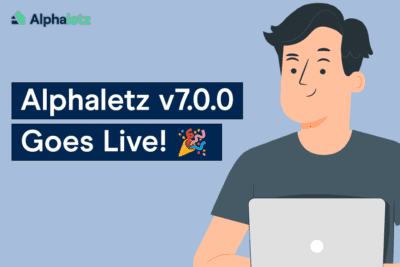Landlords are charged with a legal obligation to ensure that your property meets the standards of fitness and habitability.
Furthermore, you also need to ensure that your tenants meet the conditions of their lease agreement.
You may want to give them an eviction notice if they don’t.
Unfortunately, there’s considerable misinformation circling right now that describes eviction notices and how you can use them.

We’re here to clear up any confusion!
This article will explain what type of termination notice you should issue in different circumstances and when it’s appropriate.
Read more to learn the details of Section 8 and 21 notices.
What is a Section 8 Notice? When Can You Use It?
A Section 8 is an eviction notice that allows landlords to end a tenancy early if they believe their tenants are breaching the lease terms. The most common reasons for a breach of contract include:
- Not keeping up with rent payment.
- Causing damage to the property.
- Failure to maintain the property that goes against the agreement.

To utilise a Section 8 notice, you’ll need the appropriate grounds and evidence to support your claim, particularly if you end up going to court.
Remember that before you serve the notice to your tenant, you should always try to resolve the issues with them first. This could be an agreement plan if they’re in arrears.
Or give them a time frame to resolve the safety issues and outline precisely what you expected to be corrected.
This notice is best used for rent arrears that the tenant can pay but won’t. And if you, as the landlord, haven’t complied with the deposit scheme legislation, Section 8 is better than 21.
What is a Section 21 Notice? When Can You Use It?
A Section 21 notice is the type of eviction notice that a landlord can serve to their tenant if they want to evict them at the end of their lease agreement.
A Section 21 notice is also known as a “no-fault” notice because neither party needs to give a reason for ending the lease.
The landlord can decide to serve the tenant with a Section 21 notice on the last day of the lease term.
The tenant has two options: either continue to live in the property until the end of their lease (and pay rent until then) or move out and find another place to live.
We recommend taking a look at the blog we wrote on Section 21s, and when to serve them. This will help you understand more about how Landlords can successfully serve notices and maintain the validity of them too.

The tenant cannot challenge the notice, but they have the right to stay in the property until the end of the lease term.
If you would like the tenant to move out at the end of the lease term, but they don’t comply, a Section 21 notice is a good option.
A Section 21 notice may be appropriate if there is a breach in the lease agreement.
If you have a periodic tenancy agreement that doesn’t have a set end date, you can use a Section 21 notice if the tenant is not complying with the conditions of the lease.
Section 21 is best when the tenant has no assets and there isn’t a guarantor to pay for the rent arrears.
You’re never guaranteed to get your rent arrears back, but you will recover the property.
The Differences Between the Section 8 Notice and the Section 21 Notice
If you want to evict a tenant, you’ll need to decide whether to use Section 8 or Section 21 notice.
So, what are the core differences between these two items?
The main difference is that the tenant needs to have broken the tenancy to be able to serve them with Section 8, while Section 21 doesn’t require a reason.

A Section 21 notice can be used anytime during an AST agreement, but it’s usually effective when a tenant has breached their lease agreement.
A Section 8 notice is more effective when dealing with a tenant breach, while a Section 21 notice is more effective when repossessing the property.
Pros and Cons of the Section 8 Notice
When using a Section 8 notice, landlords have advantages and disadvantages. The benefits include using it to violate the lease agreement or the building codes.
Another advantage to using a Section 8 notice is that you can use it to terminate a tenancy before the lease agreement ends.
Remember that you have a legal obligation to ensure your property meets the standards set by the government.
A disadvantage to using a Section 8 notice is that you can only use it for a violation that can be fixed. In addition, your tenant could appeal against the notice, causing a delay in eviction.
Pros and Cons of the Section 21 Notice
When using a Section 21 notice, landlords have advantages and disadvantages.
The most significant advantage of serving Section 21 is that the tenant can’t defend against this action.
If your application is valid, you’ll regain possession of the property, and the tenant will have to leave.

Another advantage to using a Section 21 notice is that you have extra leeway regarding when you can serve the notice.
A disadvantage to using a Section 21 notice is that the process doesn’t cover any rent arrears tenants have incurred.
You can make a separate claim for the debt, but it isn’t guaranteed.
Why Is There a Transition Happening From Section 21 to Section 8?
Section 21 allows private landlords to take back property ownership without proving a tenant’s fault.
It’s colloquially known as the ‘no-fault’ grounds for eviction. Because of this, tenants and their representatives argue that the ability of landlords to terminate a tenancy on short notice has a massive negative effect on a tenant’s well-being.
In other words, knowing your landlord could throw you out at any time without giving a reason can leave you feeling stressed.

In addition, evidence shows that the ease with which tenants can be kicked out makes them feel reluctant to exercise their own rights, such as the right to challenge rent or request repairs. In short?
Section 21 places considerable power in the hands of the landlord and can put tenants at a social disadvantage.
Section 8 strives to alleviate this power gap.
There’s been talk of abolishing the Section 21 notice altogether. Because of this, many people have already started using the Section 8 eviction notice over Section 21.
Can Both Notices Be Served at the Same Time?
You’re probably wondering, can I serve section 8 and section 21 notices together?
Yes, you can serve both notices simultaneously since they are served independently and for different reasons.
So you can serve Section 8 for rent arrears because they are covered under that notice.
Even if the tenant pays up, you still have grounds for possession under the Section 21 notice (as long as you want to regain control of the property for reasons other than those that have breached the tenancy agreement).
How Can Alphaletz Help Landlords?
As a landlord, we understand that you have a lot on your plate.
From locating the right tenants to keeping your rental unit compliant with local building codes, being a landlord can be difficult. Luckily, Alphaletz can help make things easier for you.
Award Winning Property
Management Software
The #1 property management software for Landlords & Property Managers, as featured by the NRLA.
At Alphaletz, we can help you keep on top of all things property management, including finances, compliance and safety.
With Alphaletz by your side, you’ll have more time to focus on growing your business and even have the opportunity to generate extra income through the system.
We’re confident that you’ll be happy working with us.
So reach out to us today to learn more about how our property management software can make your life much easier.



